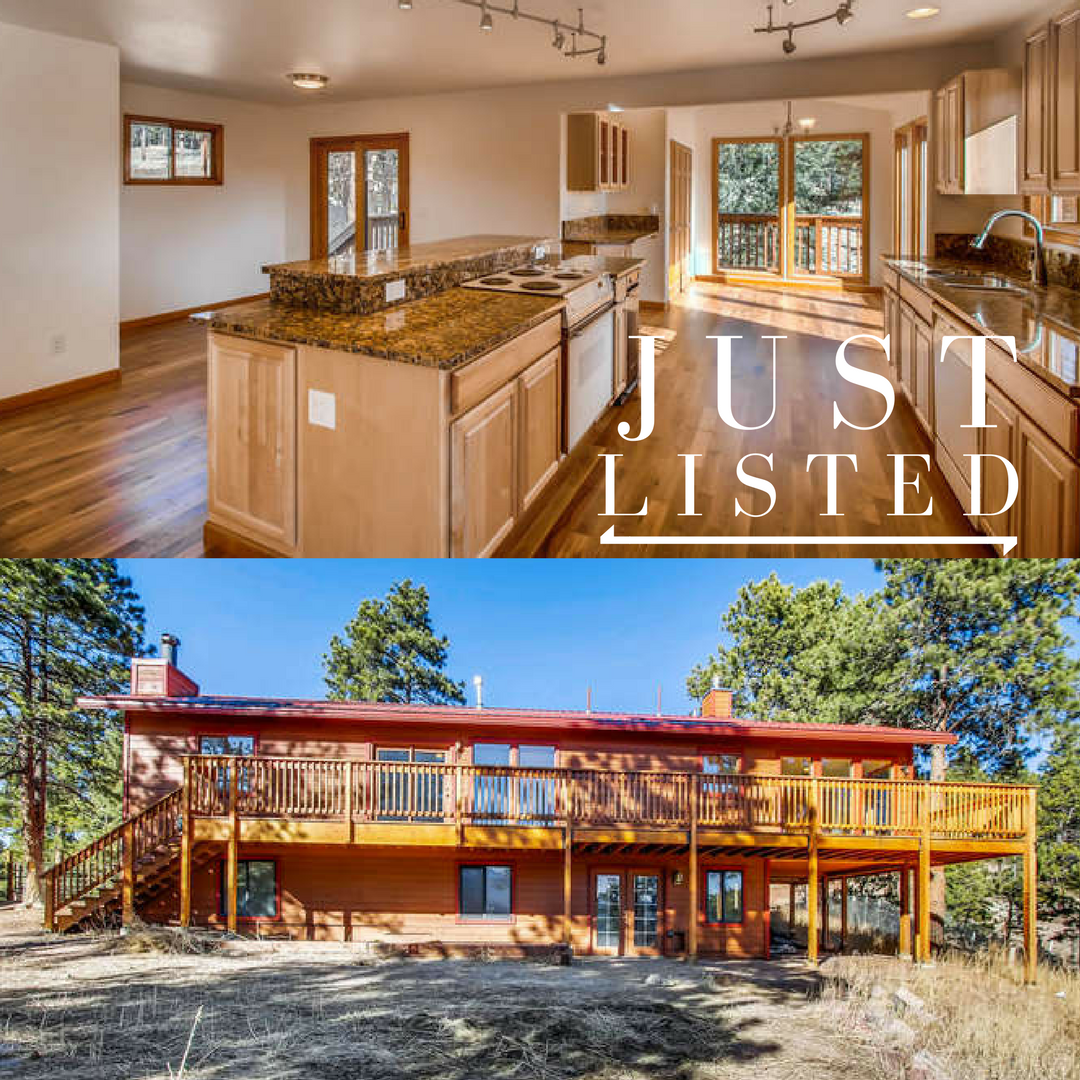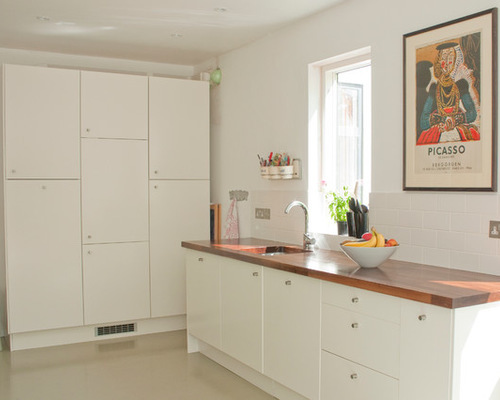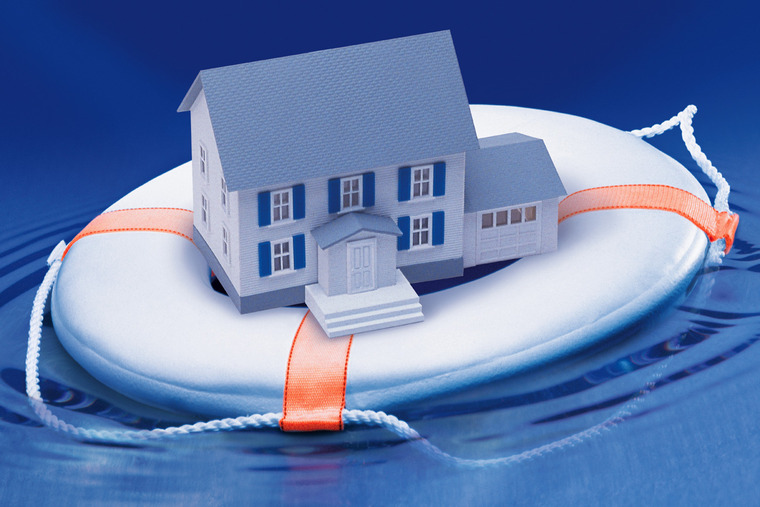What Millennials are Looking for in an Apartment or Condo

LinkedIn recently told us that 4,279 new apartments were added to Seattle’s local inventory last year, and based on the number of cranes you constantly see around the city, we believe them. With so many choices, Millennials are getting really specific about what they want in a living space and the lifestyle it provides them. Here are some of the amenities we’re told that Millennials have come to want, and in some cases, expect:
1. Parking & Electric Car Charging Stations
2. High Speed Internet and WIFI (around the entire building). Preferably free WIFI on the first floor
3. State of the Art Fitness Center – Fitness centers not only act as a place for exercise, but now a place to casually socialize and build friendships. For instance, when a developer integrates fitness classes into the gym, they are creating a space where tenants can connect with their building community.
4. Dog Grooming/Washing Facility & Outdoor Pet Run: As many millennials are postponing starting a family to focus more on their career, their pets are like their children. With that said, an apartment building that doesn’t allow their fury friends will ultimately be losing out on a big portion of the millennial pie.
5. High- Tech Control Automation: Using smart technology to control your thermostat, lights, switches, sensors, and locks while you are away.
6. Business Center/ Work From Home Space: With remote work becoming an increasing popular trend, the potential ways of catering to work-at-home tenants are limitless.
7. Laundry Facility/Service and Dry-Cleaning Drop Off/Pick Up- Laundry is a hassle, and most renters want the burden of doing laundry to be, well, less burdensome. Programs like “Laundry View” are used in some apartment buildings to view how many washers and dryers are in use. It will also send you text alerts when your laundry is done.
Read the full article on LinkedIn.
For more information on Windermere Evergreen please contact us here.
3 Garden Alternatives for a Patchy Lawn


I’ve met with more than one client while standing on a struggling lawn. “I keep trying,” they tell me, “but the grass won’t grow.” I tell them that maybe this means there’s another option, something even better than a lawn. Maybe it’s time for a garden. And it’s as if I’d just told them the secret to eternal happiness and long life.
Still Have Hope for Greener Grass? Ask a Lawn Professional
Don’t keep tossing grass seed on your bare lawn. Instead, put a garden there, or at least plant something that has a better chance of surviving. Here are three situations where a languishing lawn may call for a new vision — a self-supporting garden that wildlife will love to call home.
BE Landscape Design, original photo on Houzz
1. Blazing sun. Whether it’s out in the open on a flat grade, on a slope or atop a hill, lawn just never does well in hot sunshine. It burns away each August, opening up holes for advantageous weeds to move in.
You could seed or plant drought-tolerant native grasses like sideoats grama and blue grama (Bouteloua curtipendula and B. gracilis) and little bluestem (Schizachyrium scoparium). Or try sedges like shortbeak and Bicknell’s (Carex brevior and C. bicknellii). And while you’re at it, get some flowers. If it’s a larger area, think self-sowers like upright prairie coneflower (Ratibida columnifera), black-eyed Susan (Rudbeckia hirta) and skyblue aster (Symphyotrichum oolentangiense). For smaller areas, ‘October Skies’ aromatic aster (S. oblongifolium ‘October Skies’) works well, along with pale purple coneflower (Echinacea pallida), purple and white prairie clover (Dalea purpurea and D. candida), many species of Baptisia, and more.
Try to create a base layer of sedges and grasses that will work to mulch and cool the soil, adding clumps or drifts of flowers among them for seasonal interest and pollinator action.
Attract Pollinators for a Productive Edible Garden
2. Ponding water. After a heavy — or even moderate — rain, water may collect in an area of your lawn, drowning grass for days or even weeks. When that water finally vanishes, you’re left with barren soil that’s both unsightly and open to weed invasion.
This sounds like an area where rain garden plants may work. These are the plants that thrive in the boom-bust cycle of spring and fall flooding with dry summers. Swamp milkweed (Asclepias incarnata), Virginia mountain mint (Pycnanthemum virginianum), Joe Pye weed (Eutrochium purpureum), switchgrass (Panicum virgatum), muskingum sedge and fox sedge (Carex muskingumensis and C. vulpinoidea), New England aster (Symphyotrichum novae-angliae), queen of the prairie (Filipendula rubra), white turtlehead (Chelone glabra), and Culver’s root (Veronicastrum virginicum) are all good options.
If it’s a large area and you want privacy, a shrub hedgerow is an option. Plant redtwig dogwood (Cornus sericea), red or black chokeberry (Aronia arbutifolia and A. melanocarpa), or elderberry (Sambuca sp.) — they will slowly sucker to form a massive bird and native bee habitat.
3. Dark or dappled shade beneath a tree. Trees are great: They cool homes, clean the air and provide for so much wildlife. Oaks (Quercus spp.), maples (Acer spp.), elms (Ulmus spp.) and willows (Salix spp.) are near the top in serving a diversity of pollinators and other insects, specifically, that use the leaves and blooms at different life stages. But grass doesn’t often grow underneath these tall trees — mostly because they cast dense shade.
If you have rich, moist to medium soil, there are many spring ephemerals to choose from: Dutchman’s breeches (Dicentra cucullaria), trillium (Trillium spp.), shooting star (Dodecatheon meadia), yellow trout-lily (Erythronium rostratum) and Virginia bluebells (Mertensia virginica).
For gardeners with dry clay soil, early meadow-rue (Thalictrum dioicum), zigzag goldenrod (Solidago flexicaulis), calico aster (Symphyotrichum lateriflorum) and wild geranium (Geranium maculatum) are solid choices. Sprengel’s sedge (Carex sprengelii) is a grass-like option.
If you don’t want a large bed of strictly plants, weave a path of mulch or stepping stones through. Place a chair or two, a hammock, or a potting bench.
It’s always important to carefully research the plants before you buy them to make sure that they suit your conditions. Clay soil is different from sand or rocky loam, and while some plants may do well in several kinds of soil and light conditions, others won’t. You may also prefer plants that create short drifts rather than tall ones, or vice versa, or clumping plants instead of aggressive spreaders.
When you take the time to carefully match the plant to the site and your region, you’re setting yourself up for more success and beauty with less maintenance — unlike sowing grass seed over the same area year after year.
By Benjamin Vogt, Houzz
For more information on Windermere Evergreen please contact us here.
Private and Serene 36.8 Acres

Featuring 4 Bedrooms and 3 Bathrooms
Very private and serene 36.8 sunny and use-able acres! This beautiful house is
located at the crest of a hill providing extensive views towards the South. The
gated driveway meanders up to the house and the four car garage. A three stall
barn is located down below the house. There is an additional storage building
within close proximity to the home as well. Amazing and unusual rock
outcroppings on the property.
For more information on 15626 Pine Valley Rd please visit, the listing website.
You may also call John Putt at (720) 201-1332 or Yvette Putt at (303) 882-2245.


Refinancing: What you need to know

 Thanks to all-time-low interest rates, the number of homeowners refinancing their mortgages is at an all-time high. Of course, no one should refinance just because everyone else is doing it. But, for many homeowners, the benefits are simply too hard to ignore any longer.
Thanks to all-time-low interest rates, the number of homeowners refinancing their mortgages is at an all-time high. Of course, no one should refinance just because everyone else is doing it. But, for many homeowners, the benefits are simply too hard to ignore any longer.
Save money each month. According to Freddie Mac (The country’s largest purchaser of home mortgages), the average homeowner who refinances is able to cut their monthly payment by $108 (almost $1,300 per year) for a $200,000 loan.
Save even more in the long run. If you currently have a 30-year mortgage, refinancing with a 15-year version can save you thousands of dollars in interests over the life of the loan, plus allow you to build equity in your home faster than ever.
Switch to a fixed-rate mortgage. Refinancing with a fixed-rate mortgage gives you the security of knowing that your monthly payment will remain steady, regardless of whether lending rates rise or fall in the years ahead.
Access emergency funds. Something the mortgage industry calls “cash-out refinancing” allows you to take out a new mortgage for more than your current principal balance and use the additional money for other expenses (remodeling, college, a major medical procedure, etc.). Of course, this option should only be considered if you have a real need for the money and a solid plan for paying it back.
Consolidate debt. While consolidating credit card debt under a home loan may not be wise (unless you have a plan for controlling any additional spending), refinancing to consolidate two mortgages at these record-low rates can provide significant savings in both cases.
Things to consider beforehand:
Before moving ahead with a refinance of your own, a number of factors need to be considered (and numbers crunched) before you can determine how much you’ll actually benefit and if you can qualify for the best rates:
Closing costs. The fees associated with refinancing your mortgage are called “closing costs” and generally add up to somewhere between three and six percent of your loan amount (between $7,500 and $15,000 for a $250,000 mortgage refinancing). While there are ways to lower some of those costs, you’ll still want to weigh those expenses against how much you stand to gain.
For example, let’s say you figure you’ll be able to save $100 per month by refinancing, and you’ve calculated the closing costs at about $10,000. That means you’ll need to continue living in the house for at least eight more years before the savings surpass the closing costs. In the mortgage industry, this is referred to as the break-even point; and the longer you continue living in the house beyond the break-even point, the more money you’ll save.
Your credit score. It depends on the circumstances, but most borrowers will need a credit score of 700 or higher to get access to the best rates and closing costs. To determine your score, get a copy of your credit report from Experian, Equifax and TransUnion. (Why all three? Because, if there’s any difference, most banks will use the lowest score.)
Your current level of home equity. To qualify for refinancing, your current level of “equity” (the difference between the market value of your home and the balance of your current mortgage) typically must be 20 percent or more. That means, if the market value of your home is $250,000, the remaining balance on your loan would have to be $200,000 or less.
Pre-payment penalty. Check to see if your current mortgage includes a pre-payment penalty for refinancing. That would likely make refinancing too expensive even at these record-low rates.
The importance of timing
Mortgage rates have sustained record lows over the last few years, and they will likely stay relatively low for the next few years. However, even a small increase can make a drastic change in the amount of money you will pay over the duration of your loan. Getting the lowest rate you can, will benefit your finances over the long-term.
Getting the process started is easy. Begin by checking your equity and credit score, then crunch the numbers using one of the many online mortgage calculators.
If the initial results look promising, ask your Windermere Real Estate agent for a recommendation on a reputable lender (or mortgage broker) who can provide you with an actual quote.
6 Alternative Flooring Solutions to Refresh Your Home


Feeling ho-hum about classic hardwood floors? Here are six alternative floor solutions that can give any room in your house a fresh sense of personality, whether you’re starting from scratch or looking for an inexpensive DIY update.
1. Rubber. Often associated with commercial interiors, industrial rubber flooring can also be a sleek and smart solution for homes. Rubber is comfortable to stand on, easy to clean and durable enough to take on plenty of mess and abuse — great for an entry, a mudroom or a laundry room. From a style perspective, it gives a room a hint of an industrial edge, but in warm muted tones that still create an inviting air.
In a kitchen, a rubber floor is a chef’s dream, as it cushions the feet while the cook is standing to reduce fatigue. Plus, the textural surface reduces slipping hazards from spills and is very child-friendly. DHV Architects, original photo on Houzz
Want a rubber floor with a less industrial vibe? Choose sheets or tiles of rubber with a flat surface dyed to various hues that draw from the tones in stone tile. You wouldn’t guess this floor is rubber by looking at it, but your feet would be able to tell.
Cost: Rubber flooring can be extremely inexpensive but, in general, quality materials start at $12 per square foot. Anything below that would probably be of a quality that wouldn’t look appropriate inside a home.
2. Bamboo. Bamboo flooring is similar to wood flooring in many ways, but it imparts a Zen flair that can add a sense of peace to a room. And it is typically more moisture-resistant and hard-wearing than wood.
It should be noted that not every bamboo product is equally environmentally conscious. For one thing, shipping products from overseas can quickly make up for any carbon-footprint cost saved during production. However, if you are looking for a durable natural floor that’s sustainably grown, bamboo is a great option to consider.
It’s also worth noting that bamboo flooring can come in quite a variety of styles. A higher-contrast grain and stain can create an exotic look, for an effect that is playful and energetic rather than soft and tranquil.
If you love the look of walnut or zebrawood, bamboo can recreate that vibe with a stronger surface, and without cutting down any rare trees.
Keep in mind that the stains and adhesives involved in bamboo flooring can off-gas with an unpleasant odor, so those who are sensitive to chemicals may want to avoid the space immediately following an installation, or look at traditional hardwoods instead.
Cost: Bamboo is generally comparable in price to hardwoods, running about $2 to $8 per square foot.
3. Parquet. Everything old is new again, and while some homeowners (and many renters) are wishing away their parquet floors, others are installing them anew. These patterned wood floors add a sense of life and richness to a home, bringing visual interest and a sense of dynamic energy that typical straight-laid planks can’t match.
Installing wood in a parquet pattern also gives a lot more character to inexpensive local woods that might not have an exciting grain. For a patient DIYer, a parquet floor gives a high-fashion look with a much lower price tag than some other choices.
To give a classic block parquet layout a modern twist, use an oversized pattern in squares 12 inches or bigger. And, yes, a warm honey or orange tinted stain is back as well, especially mixed with classic modern furnishings in deep rich tones like chocolate, ruddy tan or espresso or crisp, airy whites.
Cost: Installation fees may be a bit higher than for straight-laid flooring, but the material cost can be as low as a few dollars per square foot.
See These Styles at Your Local Showroom
4. Painted. Think painted wood floors are only for cottages? As with walls, painting a floor can create as many different moods and effects as there are colors of paint. And if you choose a paint in a durable finish, it will hold up just as well as your wall paint does.
For a contemporary interior, consider a painted floor in a simple, natural hue like a muted beige or an off-white, and mix it with anything from antiques to midcentury classics or hip, trendy pieces.
You can kick up the style of a painted floor another notch by creating patterned effects that echo stone inlays, without that thousands-of-dollars investment. With a little painter’s tape and patience, this can be another great DIY approach to getting high style at home without ripping out your existing wood.
For those who do prefer a relaxed cottage air, a muted color adds a lot of charm, much like an accent wall, only underfoot. Try pale blue for a semi-neutral that will work with neutrals or other colors without clashing.
Cost: Paint and a top coat will cost a few dollars per square foot, and can be applied to existing flooring (with some good sanding and prep) or to inexpensive wood planks for a new installation.
5. Concrete. Concrete floors may sound like the domain of cold, minimalist works of architecture, but they can actually come in many forms to suit various tastes and personalities. Like wood, concrete can be stained (or tinted), allowing the material to feel quite warm and human in a way that beautifully suits transitional or traditional spaces.
Why choose concrete? Well, you can imagine that if the material can handle the wear and tear in an auto factory or warehouse, it can easily handle pets, children and sharp heels.
For an added seal and a gloss effect, concrete is sometimes finished with a coat of resin. This gallery-like look typically comes with a gallery price tag, but for those who enjoy a modern atmosphere with a perfect polish, this look is definitely photoshoot-ready.
It should be noted that concrete does not retain heat well, and thus can be chilly without a heated floor system, but extremely cozy with one installed.
Cost: With heated floors and a sleek finish, the cost can definitely add up. Your budget could range from $2 to $20 per square foot and beyond.
6. Cork. Cork flooring, like bamboo, can be developed very sustainably, making many cork products a smart choice for those hoping to reduce their environmental impact.
In the case of cork, the finish is very important to determining how water-resistant the product will be. However, cork has natural springiness that makes it feel extra comfortable (a little like rubber) and makes it resistant to dents and dings. Plus, it has a unique visual texture that’s a little like wood’s but with a twist, for a very livable sense of flair.
Cork works beautifully for sleek modern spaces or contemporary ones, as it has a natural softness that gives it a friendly vibe. If you’re considering using carpet in some rooms and wood in others, consider cork for the entire home, and get the best of both worlds along with a sense of harmony.
Cost: Cork ranges from $3 to $8 per square foot, but keep in mind that some products may require an additional sealant to hold up to moisture and possible stains.
By Yanic Simard, Houzz
For more information on Windermere Evergreen please contact us here.
 Facebook
Facebook
 X
X
 Pinterest
Pinterest
 Copy Link
Copy Link

 Your kids have moved out and now you’re living in a big house with way more space than you need. You have two choices – remodel your existing home or move. Here are some things to consider about each option.
Your kids have moved out and now you’re living in a big house with way more space than you need. You have two choices – remodel your existing home or move. Here are some things to consider about each option.

 When it comes time to decide if you want to downsize, there are many thoughts and emotions that go speeding through your mind. Maybe you have already decided this is your home for the rest of your life. Your home was the perfect place to meet your needs when you were in an earlier cycle of life, and will be the ideal home for all the events you see happening in your next. If you are inclined to feel that the home you currently reside in may have out-lived its purpose, you may be struggling with some of the same thoughts and emotions my husband and I had when it came to the emotional and financially sensitive decision to downsize.
When it comes time to decide if you want to downsize, there are many thoughts and emotions that go speeding through your mind. Maybe you have already decided this is your home for the rest of your life. Your home was the perfect place to meet your needs when you were in an earlier cycle of life, and will be the ideal home for all the events you see happening in your next. If you are inclined to feel that the home you currently reside in may have out-lived its purpose, you may be struggling with some of the same thoughts and emotions my husband and I had when it came to the emotional and financially sensitive decision to downsize.
 Now that the end of the year is upon us, it’s time to start thinking about some New Year resolutions. At Windermere, our resolutions change very little year after year. That’s because the highest expectation we can set for ourselves is to anticipate and respond to the needs of our clients, while supporting the communities in which we serve.
Now that the end of the year is upon us, it’s time to start thinking about some New Year resolutions. At Windermere, our resolutions change very little year after year. That’s because the highest expectation we can set for ourselves is to anticipate and respond to the needs of our clients, while supporting the communities in which we serve.
 In addition to providing shelter and comfort, our home is often our single greatest asset. And it’s important that we protect that precious investment. Most homeowners realize the importance of homeowners insurance in safeguarding the value of a home. However, what they may not know is that about two-thirds of all homeowners are under-insured. According to a national survey, the average homeowner has enough insurance to rebuild only about 80% of his or her house.
In addition to providing shelter and comfort, our home is often our single greatest asset. And it’s important that we protect that precious investment. Most homeowners realize the importance of homeowners insurance in safeguarding the value of a home. However, what they may not know is that about two-thirds of all homeowners are under-insured. According to a national survey, the average homeowner has enough insurance to rebuild only about 80% of his or her house.
 Now that the end of the year is upon us, it’s time to start thinking about some New Year resolutions. If your 2018 resolution is to buy or sell a home, here are some suggestions to help you along the way. For everyone else, we’ve added some tips about building equity and investing in updates to your home.
Now that the end of the year is upon us, it’s time to start thinking about some New Year resolutions. If your 2018 resolution is to buy or sell a home, here are some suggestions to help you along the way. For everyone else, we’ve added some tips about building equity and investing in updates to your home.